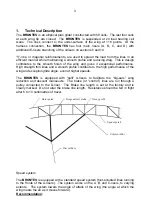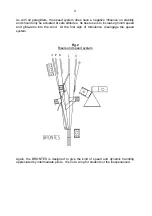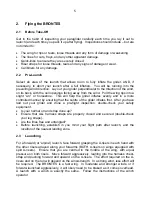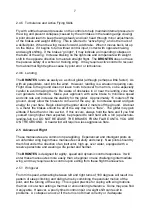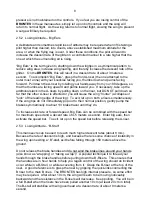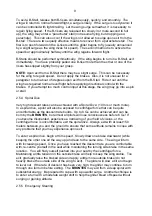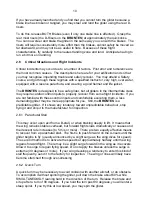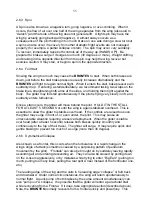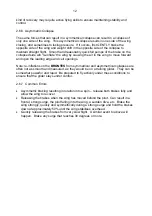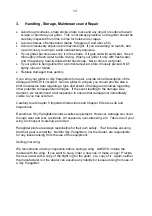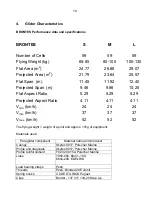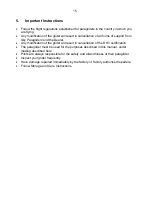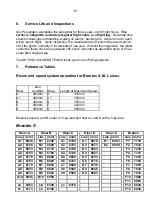
5
2.
Flying the BRONTES
2.1
Before Take-Off
Get in the habit of inspecting your paraglider carefully each time you lay it out to
launch (and each time you pack it up after flying). Inspections should include – but are
not limited to:
•
The wing for rips or tears, loose threads and any form of damage or weakening.
•
The lines for cuts, frays, and any other apparent damage.
•
Quick-links to ensure they are securely closed.
•
Riser straps for loose threads, tears and any signs of damage or wear.
•
Caribiners for any damage.
2.2 Pre-Launch
Select an area of the launch that allows room to fully inflate the glider, AND, if
necessary, to abort your launch after a full inflation. You will be running into the
prevailing wind direction. Lay out your glider perpendicular to the direction of the wind,
on its back, with the cell openings facing away from the wind. Pull the wing tips into a
slight “arc” or horseshoe. This will help the glider inflates evenly and in a more
controlled manner by ensuring that the centre of the glider inflates first. After you have
laid out your glider and done a pre-flight inspection, double-check your safety
equipment.
•
Is your helmet on and strap done up?
•
Ensure that ALL harness straps are properly closed and secured (double-check
your leg straps).
•
Are the lines free and untangled?
•
Before launching, establish in you mind your flight path after launch, and the
location of the nearest landing zone.
2.3 Launching
For a forward (or “alpine”) launch, face forward grasping the A-risers in each hand with
the other risers arrayed along your forearms (BOTH A-risers on wings equipped with
split A-risers). Ensure that you are centred in the middle of the wing, with equal
pressure on both risers. Move forward aggressively, leaning into the harness chest-
strap and pushing forward and upward on the A-risers. The effort required on the A-
risers and on the run will depend on the wind-strength. In a strong wind, less effort will
be required. The BRONTES is a fast wing. In moderate and stronger winds, or if
forward-launched aggressively, it will likely need to be braked as it comes overhead.
A launch with a winch is exactly the same. Follow the instructions of the winch
operator.
Содержание BRONTES
Страница 18: ...18 ...



